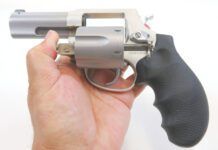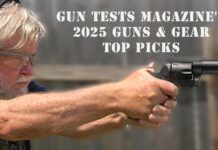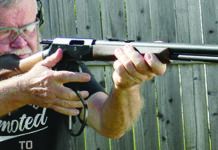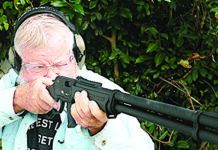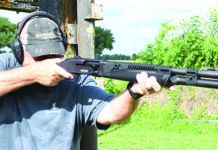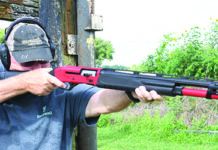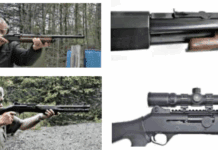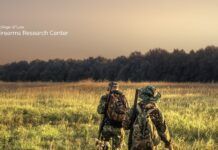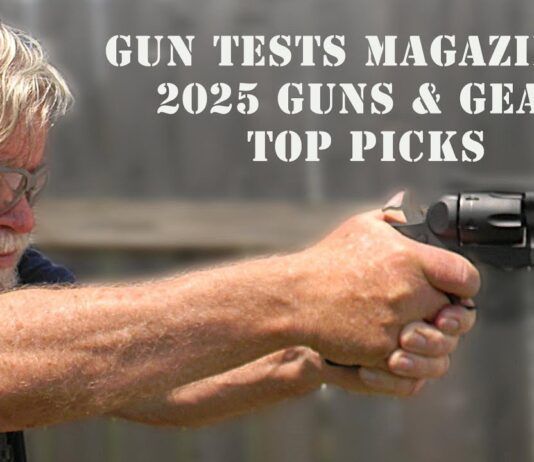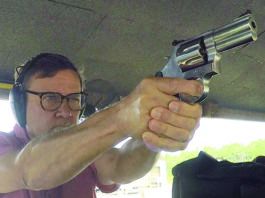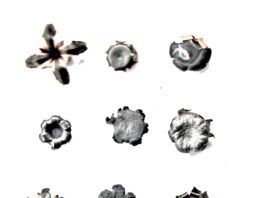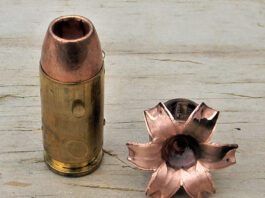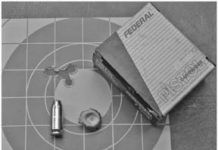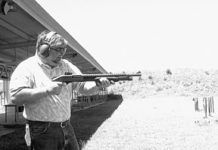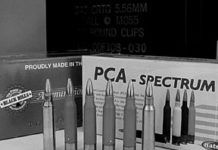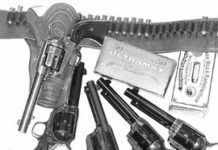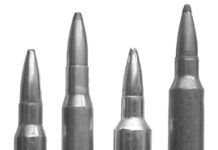Survivor Bullet Testing: .45 ACP 230-Grain Hollowpoints
We believe our tests of cartridges from Federal, Winchester, PMC, and Speer can point you toward a topnotch self-defense ammo that you can, and should, evaluate in your own handgun.
Shotguns, Slugs, Buckshot: Whats Right for Effective Self-Defense?
We test several loads in an affordable pump gun and learn when enough power is enough and when a lot of power is too much.
Polymer-Cased .223 Rem. AR-15 Ammo: Fantastic, or Just Plastic?
Traditionalists may recoil from shoving plastic into their chambers, but this product was safe, reliable, and accurate.
Winchester Ranger Ammunition Challenges Federal Hydra-Shok
The Ranger Law Enforcement Only (LEO) ammunition is a direct challenge to the Federal Hydra-Shok cartridge that is used exclusively by the FBI. We wondered how the two rounds stacked up in a head-to-head comparison, so we acquired samples of both rounds in .357 Sig, .45 ACP and .40 S&W [PDFCAP(1)]. Here is what we found.
The Winchester Ranger ammunition in .357 SIG (125-grain SXT, code RA357SIGT, a jacketed hollowpoint) on average fell some 27 foot-pounds of energy short of the Federal Hydra-Shok in the same weight and configuration. Accuracy of the Ranger round was also slightly behind, to the tune of 0.3 inch on average. Other considerations, recoil and report, were slightly less than when firing the Federal cartridge in the SIGArms P239.
On the .40 S&W side, the Winchester Ranger cartridge, we feel, proved superior when fired in the Glock 22. The Ranger 180-grain SXT (code RA40T) shot groups nearly half the size of the Federal Hydra-Shoks in the same bullet weight and configuration. Muzzle energy was nearly identical but recoil and report were, in the case of the Ranger ammunition, noticeably reduced.
.45 Single-Action Colts and Clones: USFAs Rodeo Is Our Pick
One hundred and thirty years ago Colt's brought out its Model P, also known as the Single Action Army revolver. (For those who wonder, Sam Colt never saw the Model P. He died in 1862.) The company is still making the old thumb-buster, and a host of companies are producing clones of it in what seems to be ever-increasing numbers. The game of Cowboy Action Shooting must surely be one of the main driving forces behind the continued onslaught of fine and finer single actions, but the fact remains that these revolvers are viable sporting, hunting, and even self-defense firearms, and serve their owners in as many capacities as they did in the 1870s.
Winchesters .300 WSM: Short And Fat Versus Long and Slim
Winchester's .300 WSM seems a bit strange to us. Its purpose would seem to be the achieving of a somewhat lighter rifle while maintaining the approximate performance of the .300 Winchester Magnum. With its 1/2-inch-shorter cartridge length, the .300 WSM's action can be half an inch shorter, too. Also, there's the matter of a shorter bolt throw, which implies a faster-operated rifle. Independent tests of these points by some friends of Gun Tests indicated they are not necessarily true. (They found identical rifle weights and bolt-operation times in a casual test of on-hand rifles.)
Steel 3-inch Magnum Loads Our Pick For Waterfowl Hunting
This year hunters have a choice of two new non-toxic waterfowl loads other than steel. They are bismuth and tungsten. Both solve some of the problems encountered with steel, but neither are as good as lead. They may not even be as good as steel. To determine just how good the new loads were, we tested them in the popular 12 gauge 3-inch magnum load.
The main problem with steel shot is that it's not dense enough. At least, it's not as dense as lead shot and thus its downrange velocity falls off faster than lead. This results in just a little more wind drift. With a 14.5 mile per hour cross-wind, steel shot will drift 25.8 inches; lead will drift only 22.5 inches. The loss of downrange velo...
Federal 00 Tactical Load A Top Performer For Self-Defense
Cor-Bon 150-grain JHP Bests Other .40 S&W Ammunition
Introduced in 1990, the .40 S&W cartridge was developed primarily for the police community. It combines a 40-caliber bullet with a high operating pressure (35,000 psi) for maximum stopping power. Like the .357 Magnum, a high-pressure revolver cartridge we tested two years ago, most of the ammunition we tried in this evaluation performed just as it is supposed to. Only one load needs to be avoided.
To test the effectiveness of the different brands, we bought twelve different self-defense loads. For a direct comparison, all were as close as possible to 155 grains in bullet weight. None were advertised to penetrate Kevlar body armor. None were limited to law enforcement personnel. All the sh...
Winchester Joins Remington, Federal With Excellent .30-06 Load
We've tested ammunition with this caliber of bullet, .308 inch, twice before: Once in .308 Winchester (October 1995 issue) where we tested ammunition with 150-grain bullets, if we could get them, and once in .300 Winchester Magnum (October 1996 issue) using loads with 180-grain or heavier bullets. This time we're testing ammunition with 165-grain bullets. We think they're the best choice for the .30-06 Springfield. If we couldn't find 165-grain bullets, we chose 180-grain bullets.
To get this article ready for October publication, we did the testing in August. As you can imagine, the sporting goods stores didn't have a very good selection of ammunition on the shelves at that time. So, thi...
Federal 125-grain JHPs Beats Other .357 Magnum Ammo
The .357 Magnum is a powerful handgun. In fact, when loaded with 125-grain jacketed hollow points, it is considered to be one of the most effective handguns for self defense. However, some ammunition in this caliber is better than others.
To test the effectiveness of different brands, we bought every kind of .357 Magnum self-defense ammunition we could find. Fifteen different loads were purchased from four different sources. None of it was limited to law enforcement agencies. None of it was advertised to penetrate Kevlar body armor. Six loads were positively excellent. None were unsatisfactory. All shooting was done with a Smith & Wesson Model 586 revolver with a six-inch barrel.
We t...
State-Of-The-Art Sabot Slugs: Winchesters Partition is Golden
[IMGCAP(1)] Shotgun hunters are currently blessed with some of the best projectiles—sabot slugs—they've ever had to shoot, but improvements in these rounds have been slow in coming. Winchester-Western ballistician Karl Foster redesigned the old pumpkin-ball slug into what is essentially a 20th century .72-caliber Minie Ball in 1933. From that breakthrough until the early 1980s, there was very little change in shotgun slugs—until the advent of rifled barrels for shotguns and sabot slugs changed everything. By encasing an aerodynamic .50-caliber pellet-like projectile in a two-piece plastic sleeve of bore diameter to grip the rifling (an idea used in artillery for nearly a century), slug shoot...



